In an era of vanishing single screens, little Radha Studio strikes back
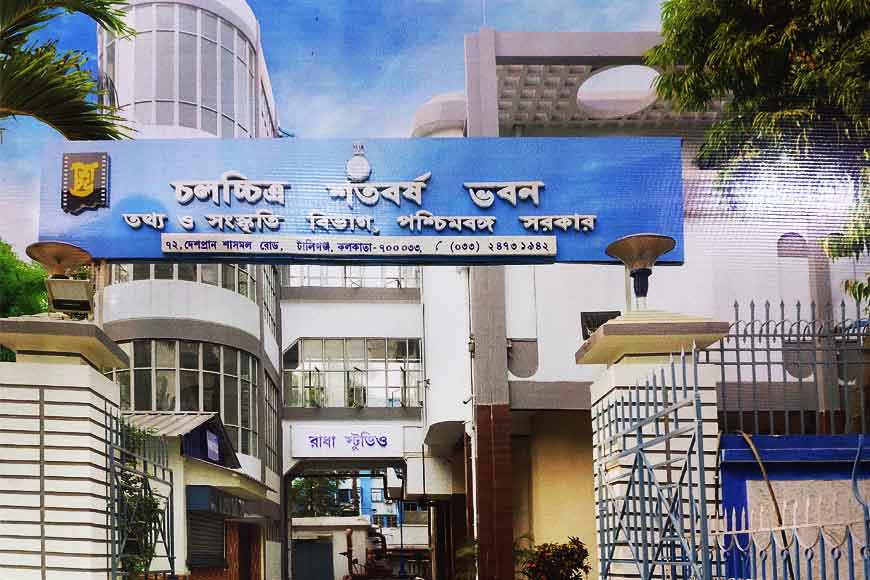
Small, neat, cosy, colourful. Single screen, great sound. All of it for a ticket price of only Rs 30 per head. In a nutshell, that is Radha Studio inside and out. The city’s newest movie viewing destination was opened to the public on May 6 this year on the ground floor of the rather ponderously named Chalachchitra Shatabarsha Bhavan, or Cinema Centenary House. Before we proceed further, a brief explanation of the name.
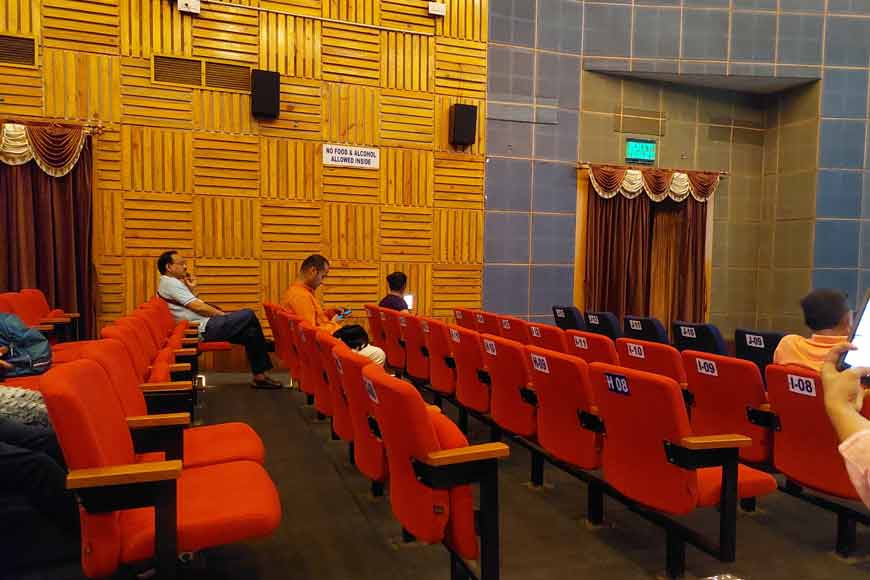
On November 1, 1919, a silent black-and-white film directed and written by a pair of Gujaratis released in Kolkata as the ‘first ever’ Bengali feature film, owing to the fact that the title cards were in Bengali. With a running time of 132 minutes, Bilwamangal was a full-length film directed by Rustomji Dhotiwala, based on a story by Champshi Udeshi. Today, only about 28 minutes of the film survive, courtesy France’s Cinémathèque Française, from which the National Film Archive of India acquired the footage in 2016.
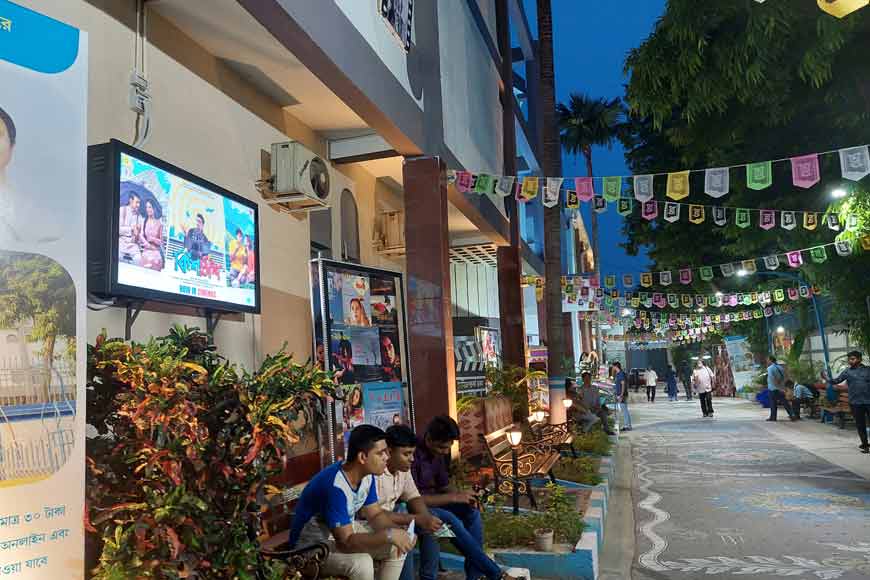
The centenary of Bengali cinema came and went in 2018, with the usual line-up of screenings, seminars, workshops, and the Kolkata International Film Festival themed on the centenary. Had the Covid pandemic not descended upon us, Chalachchitra Shatabarsha Bhavan may have come into existence earlier, but the fancy title may soon become irrelevant, since Radha Studio is the name likely to stick anyway.
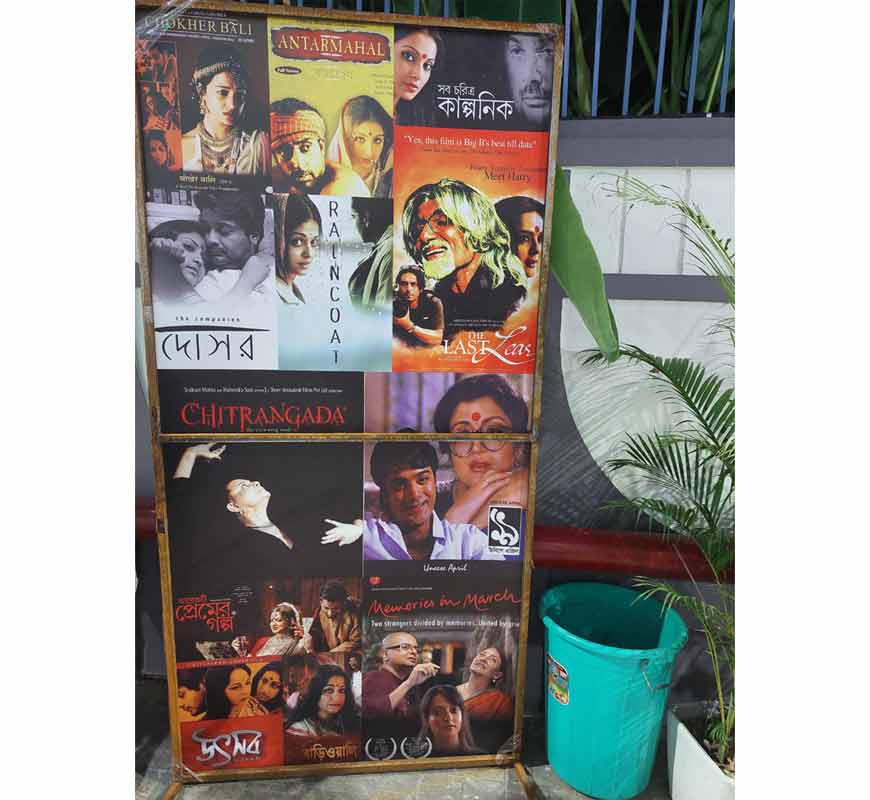
It is a name with a long and rich history too, a studio where countless iconic Bengali films were born, a second home to some of the industry’s biggest contemporary stars since the 1930s, such as Kanan Debi, Ahindra Chowdhury, Tulsi Chakraborty, Jahar Ganguly, Kali Banerjee, and Sandhyarani. Somewhere along the way, as bigger studios and shooting facilities came up, Radha Studio began to be repurposed. When Doordarshan Kolkata went on air as India’s first regional Doordarshan channel in 1975, Radha Studio became its home until it shifted to its permanent address at Golf Green in 1986.
Prior to its reemergence as the home of the ‘new’ Radha Studio this year, the building was in use as the state government’s publicity censor office and a film vault, until Chief Minister Mamata Banerjee decided to rename part of it as Radha Studio to connect the old with the new. From what one gathers, the revenue sharing model is similar to that followed at any government-run theatre, where 50 percent of net box-office collections for a film go to the government and the rest is shared by the distributors and producers. In fact, there is a distinct ‘junior Nandan’ feel stamped all over the new theatre, right down to the exterior and interior decorations.
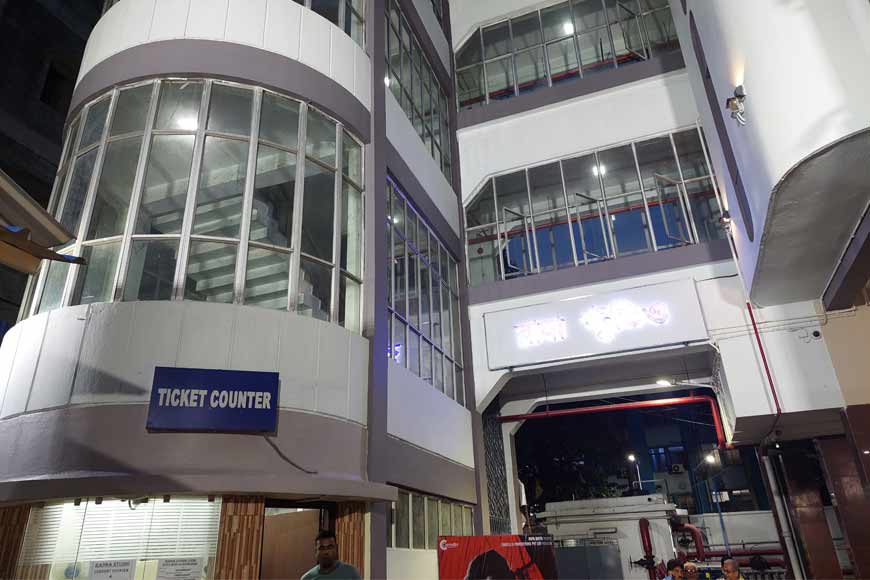
Of course, with nearly 950 seats, Nandan I would swallow the 150-seat Radha Studio whole. But given the ridiculous ticket price of Rs 30, the newcomer is likely to not only provide strong competition to the larger venue, but also strike a blow for the rapidly vanishing breed of single-screen theatres in the city. In the Tollygunge area alone, famous single-screen theatres of long standing, like Malancha and Madhuban, have closed down in recent times.
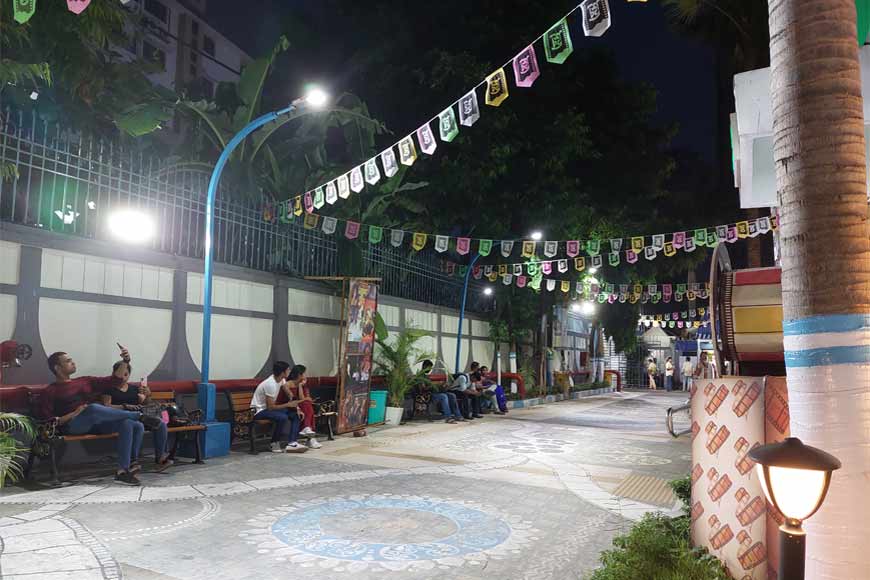
While Chalachchitra Shatabarsha Bhavan has been screening films during KIFF every year, the 152-seat Radha Studio will now regularly exhibit commercial films as Nandan does, with a special focus on Bengali films to give a much needed boost to the local film industry. Indeed, to extend the junior Nandan analogy, the same screening committee which selects films for Nandan I and II will do the same for Radha Studio.
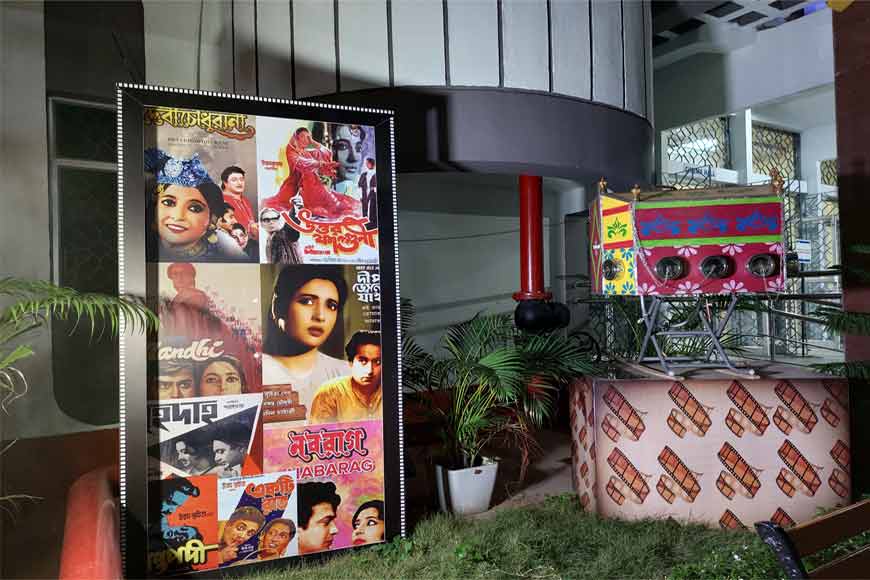
The only drawback is that the seating follows the old-style single-screen model where all the rows are on the same level, unlike the gallery style of a multiplex. My companion, who is over six feet tall, was asked if he could somehow lower his head so that the man behind him had a better view. But this is unlikely to be a deal breaker given the theatre’s other advantages. For those prone to nostalgia, there are even grumpy ushers with torches who show you to your prominently numbered seat, so what if the lights are shining bright?
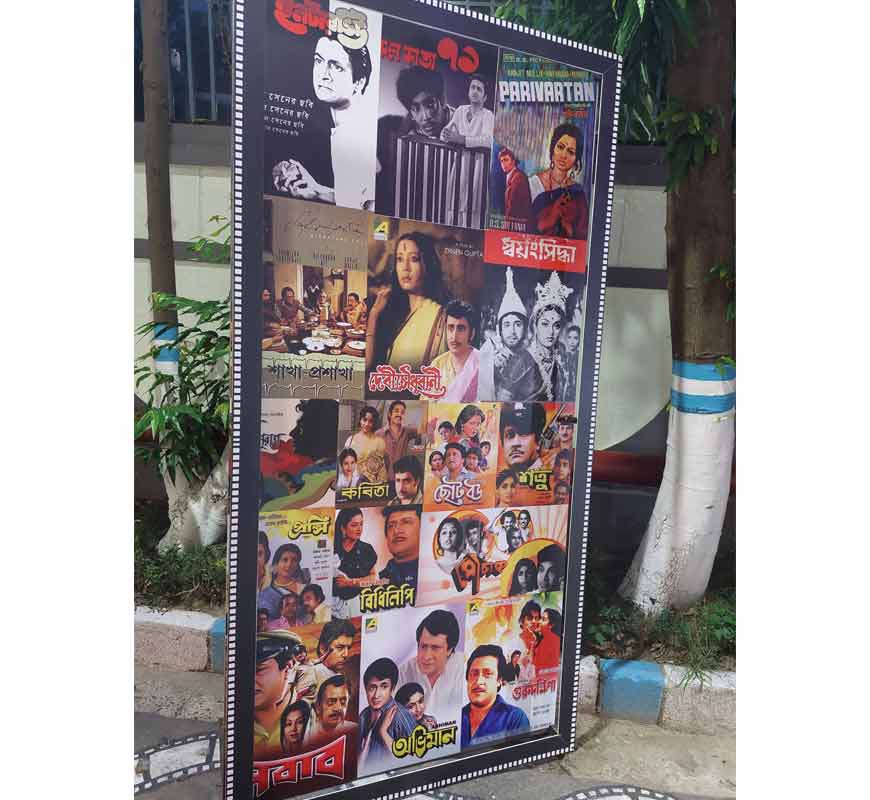
Its proximity to both Tollygunge and Rabindra Sarobar Metro stations, the bright and cheerful decor, highly efficient air-conditioning, high-resolution screen, and crystal clear sound system are more than worth the price of admission. In an age of super expensive multiplexes, Radha Studio comes as a win-win. The full house which watched the film with us would certainly agree.
Radha Studio/ Chalachchitra Shatabarsha Bhavan
Address: 72, Deshapran Sasmal Road (near M.R. Bangur Hospital, opp. Tolly Club entrance)
Tickets: Rs 30 per head, online bookings available; current tickets may be bought at the hall counter 30 minutes before a show
No. of seats: 152
Show times: 1.00 pm, 4.00 pm, 7.00 pm (subject to change)










